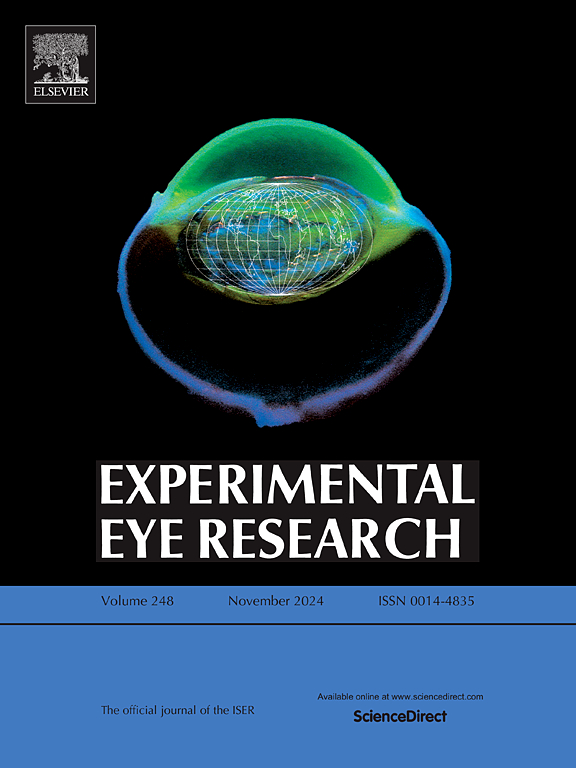Tailoring UPS-to-autophagy transition to restore RGC prosperity and functionality in a rodent traumatic optic neuropathy model
IF 3
2区 医学
Q1 OPHTHALMOLOGY
引用次数: 0
Abstract
Direct or indirect injury to the optic nerve can lead to traumatic optic neuropathy (TON), a pathological process eventually resulting in long-term vision loss. Experimentally, optic nerve crush (ONC) simulates TON by inducing retinal ganglion cell (RGC) apoptosis and vision loss. This study investigates the neuroprotective effect of a HECT domain-E3 ubiquitin ligase inhibitor, Compound 056, on retinal ganglion cells after traumatic injury. Experimental traumatic optic neuropathy (TON) was induced by mechanical compression of the rodent optic nerve. Compound 056 was administered (60 mg/kg) subcutaneously once on the same day after TON induction. Compound 056 treatment (60 mg/kg) significantly increased RGC survival and preserved visual function after TON induction. The number of TUNEL-positive cells was significantly decreased, and optic disc edema was reduced. Bulk RNA sequencing revealed that HUWE1, an E3 ubiquitin ligase, was potentially linked to the suspended autophagy and NLRP3-mediated neuroinflammation after TON induction. We demonstrated that compound 056 effectively alleviated neuroinflammation and enhanced autophagic flux at transcriptomic and protein levels. These findings suggest compound 056 may have therapeutic potential in treating TON by modulating NLRP3 inflammasome pathways and the autophagic flux within the retina and optic nerve.
在啮齿动物创伤性视神经病变模型中,调整ups到自噬的过渡以恢复RGC的繁荣和功能。
视神经的直接或间接损伤可导致外伤性视神经病变,这是一种最终导致长期视力丧失的病理过程。视神经压迫(ONC)通过诱导视网膜神经节细胞(RGC)凋亡和视力丧失来模拟TON。本研究探讨了HECT结构域e3泛素连接酶抑制剂化合物056对创伤后视网膜神经节细胞的神经保护作用。采用机械压迫啮齿动物视神经的方法,诱发实验性外伤性视神经病变。化合物056于TON诱导后同日皮下给药1次(60 mg/kg)。复方056 (60 mg/kg)显著提高了TON诱导后RGC的存活率和视觉功能。tunel阳性细胞数量明显减少,视盘水肿明显减轻。大量RNA测序显示,E3泛素连接酶HUWE1可能与TON诱导后暂停自噬和nlrp3介导的神经炎症有关。我们证明了化合物056在转录组和蛋白质水平上有效地减轻了神经炎症并增强了自噬通量。这些发现表明,化合物056可能通过调节NLRP3炎性小体通路和视网膜和视神经内的自噬通量而具有治疗TON的潜力。
本文章由计算机程序翻译,如有差异,请以英文原文为准。
求助全文
约1分钟内获得全文
求助全文
来源期刊

Experimental eye research
医学-眼科学
CiteScore
6.80
自引率
5.90%
发文量
323
审稿时长
66 days
期刊介绍:
The primary goal of Experimental Eye Research is to publish original research papers on all aspects of experimental biology of the eye and ocular tissues that seek to define the mechanisms of normal function and/or disease. Studies of ocular tissues that encompass the disciplines of cell biology, developmental biology, genetics, molecular biology, physiology, biochemistry, biophysics, immunology or microbiology are most welcomed. Manuscripts that are purely clinical or in a surgical area of ophthalmology are not appropriate for submission to Experimental Eye Research and if received will be returned without review.
 求助内容:
求助内容: 应助结果提醒方式:
应助结果提醒方式:


